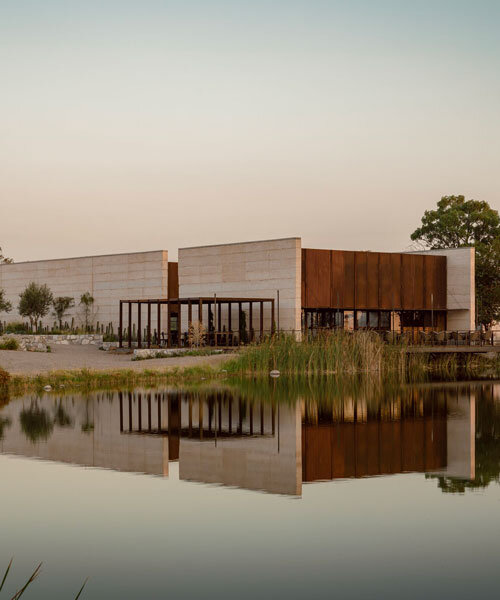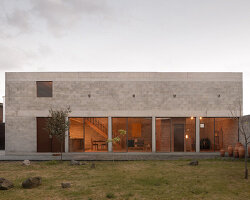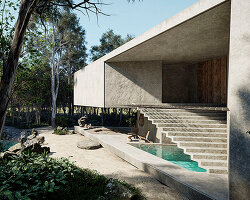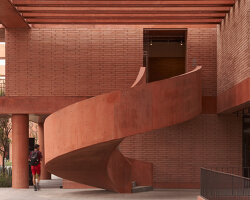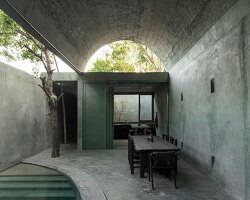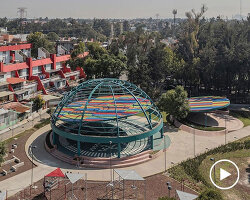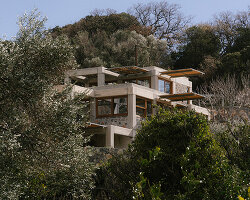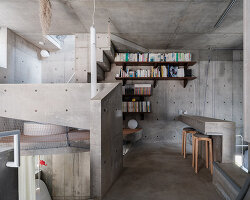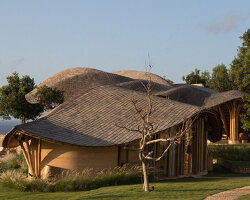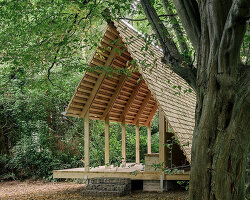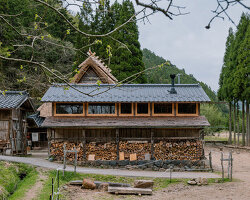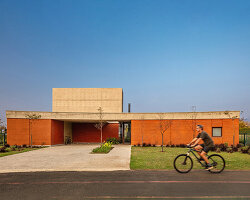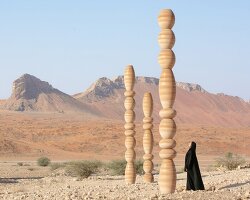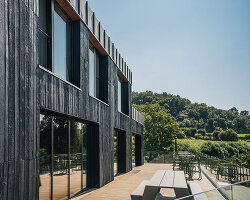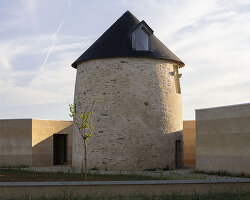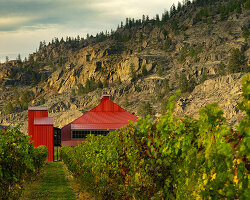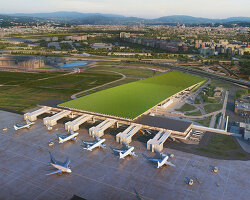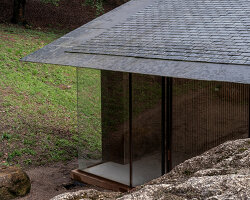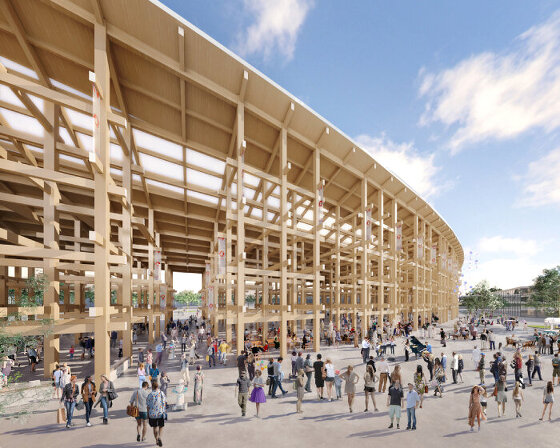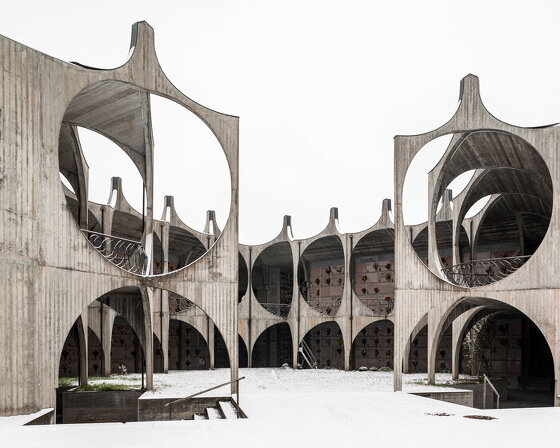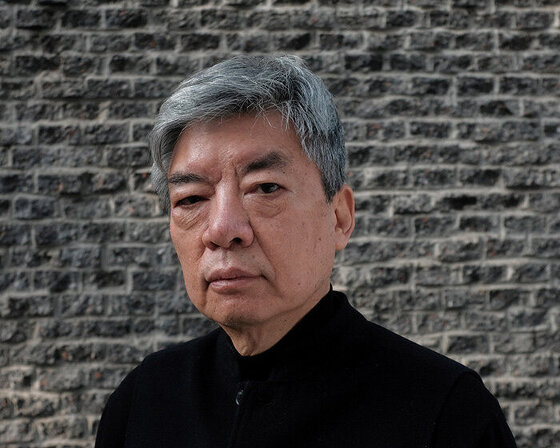COA uses local materials to blend the Winery with its context
COA Arquitectura designs Tierra Tinta Winery as a modular complex that integrates natural and local materials, reflecting its vineyard context in Aguascalientes. The project consists of three buildings and an event esplanade, all connected by corridors and landscaped gardens. The buildings include a restroom core with a warehouse and boutique, an unbuilt restaurant, and the winery building, which houses a tasting room and a cellar. The structures are arranged diagonally to frame views of the surrounding landscape, such as the lake, vineyards, and the distant Cerro del Muerto, while also creating enclosed, sheltered spaces.
The architecture incorporates ‘loose’ suelocemento walls—rammed earth reinforced with cement—used as freestanding, square, or c-shaped enclosures. The spaces are enclosed with lightweight metal and sheet metal structures, resembling agricultural buildings typically found in rural environments. Between the walls and the esplanade, the open spaces are landscaped with low desert vegetation, including cacti, shrubs, olive trees, and stone walls that double as seating and retain the terraces. The design of these elements echoes the geometric patterns of the vineyard, extending its visual language into the surrounding areas.
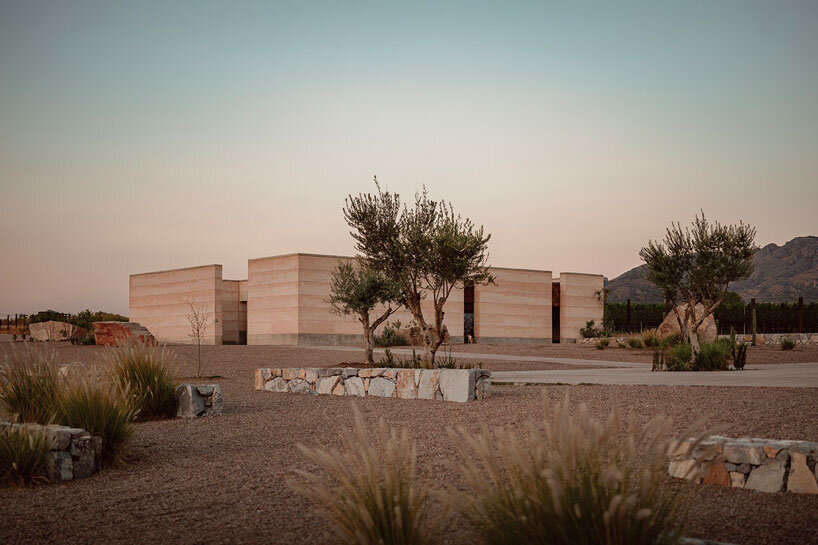
all images by César Béjar Studio
Enclosed Courtyards and Pathways outline Tierra Tinta Winery
Upon arrival, visitors are welcomed by a square formed by walls, set against a row of cacti. COA’s architectural team arranged this space to direct the path to an avenue leading to the main esplanade. The first building contains the restroom core, where large, full-height openings provide entry points to the bathrooms. Inside, a cactus courtyard offers a transitional space before entering the porticoed waiting area. The restroom interiors feature metal and wood screens, with steel counters leading to the common courtyard. Privacy is created with low T-shaped stone walls, ensuring seclusion while maintaining openness.
The winery is positioned as the focal point of the esplanade, featuring a 47-meter-long, 5-meter-high wall with a slim, full-height opening that shows the entrance. Upon entering, visitors are greeted by a central courtyard, from which the production area and the tasting room can be accessed. The production area is topped with sawtooth-shaped corrugated steel roofing, designed to draw in natural light through north-facing windows.
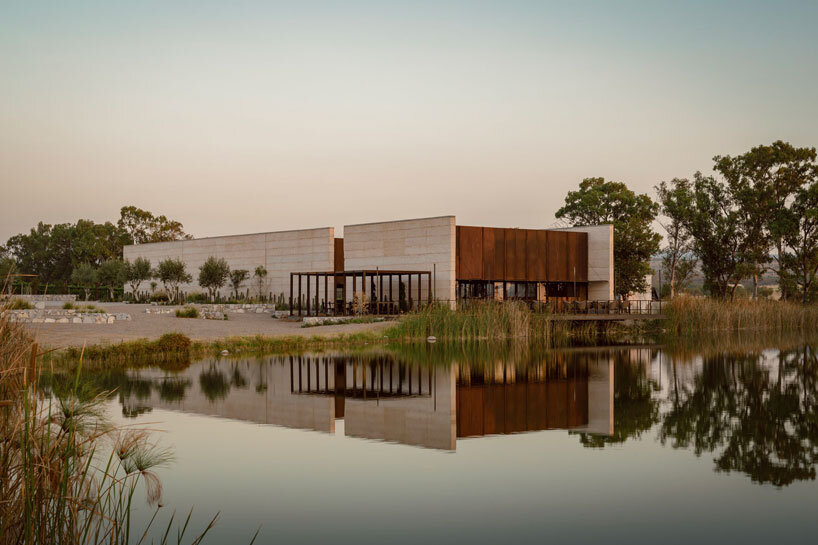
Tierra Tinta Winery is a modular complex that uses local materials to blend with its vineyard surroundings
rustic, atmospheric setting defines the cellar and tasting room
The tasting room is framed by two solid walls and features pivoting doors on either side, allowing seamless flow from the courtyard to a wooden deck cantilevered over the lake. The interior of the tasting room is finished with a floor of reclaimed train sleepers and a wooden ceiling providing warmth. The room is minimally furnished, with a wall-mounted wardrobe, counter tables, and a steel cylinder that leads to a spiral staircase descending into the cellar.
In the cellar, a serpent-shaped pathway guides visitors into the space, leaving natural light behind to create a dramatic atmosphere. Underneath the production area, the cellar is supported by twin columns that bear the concrete slab and steel beams, allowing the earth walls from the excavation to remain exposed. The space is designed for both wine maturation and tasting, featuring wine barrels, boulders moistened by water, and a bottle cabinet that complements the rustic, atmospheric setting.
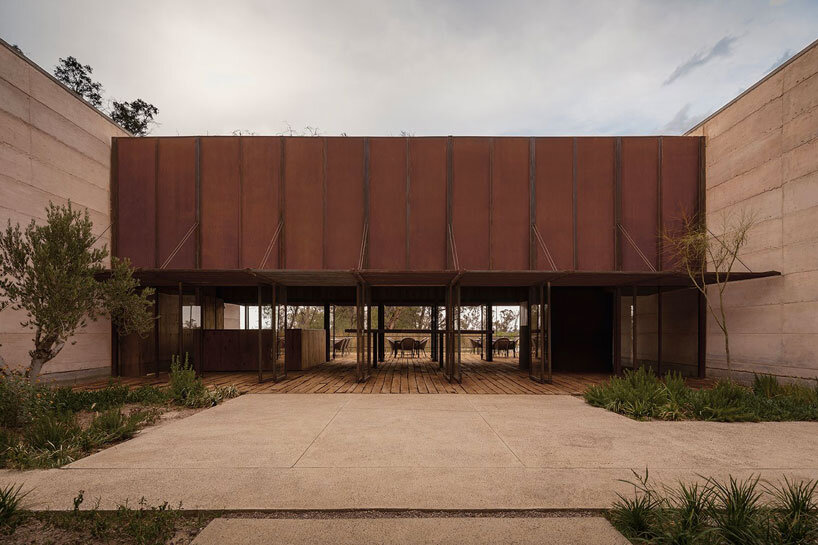
the winery’s three buildings and event esplanade are connected by corridors and landscaped gardens
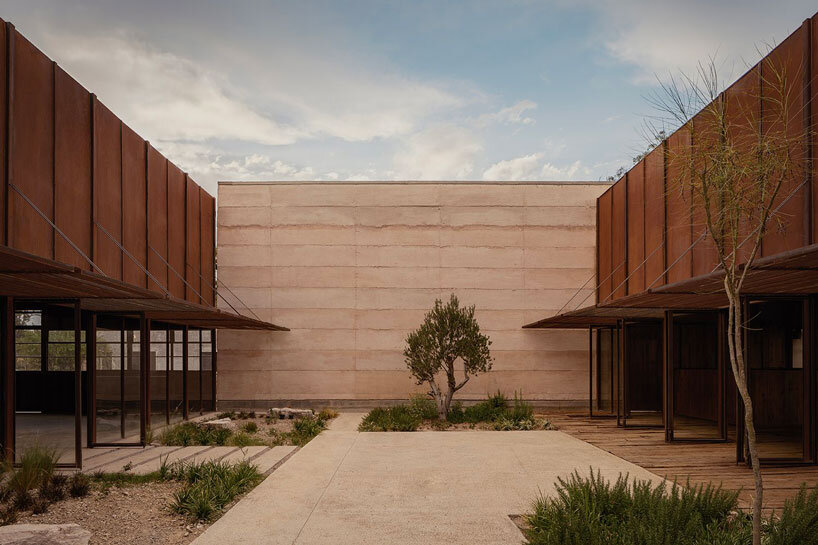
diagonal building arrangements frame views of the lake and vineyards, while creating enclosed spaces
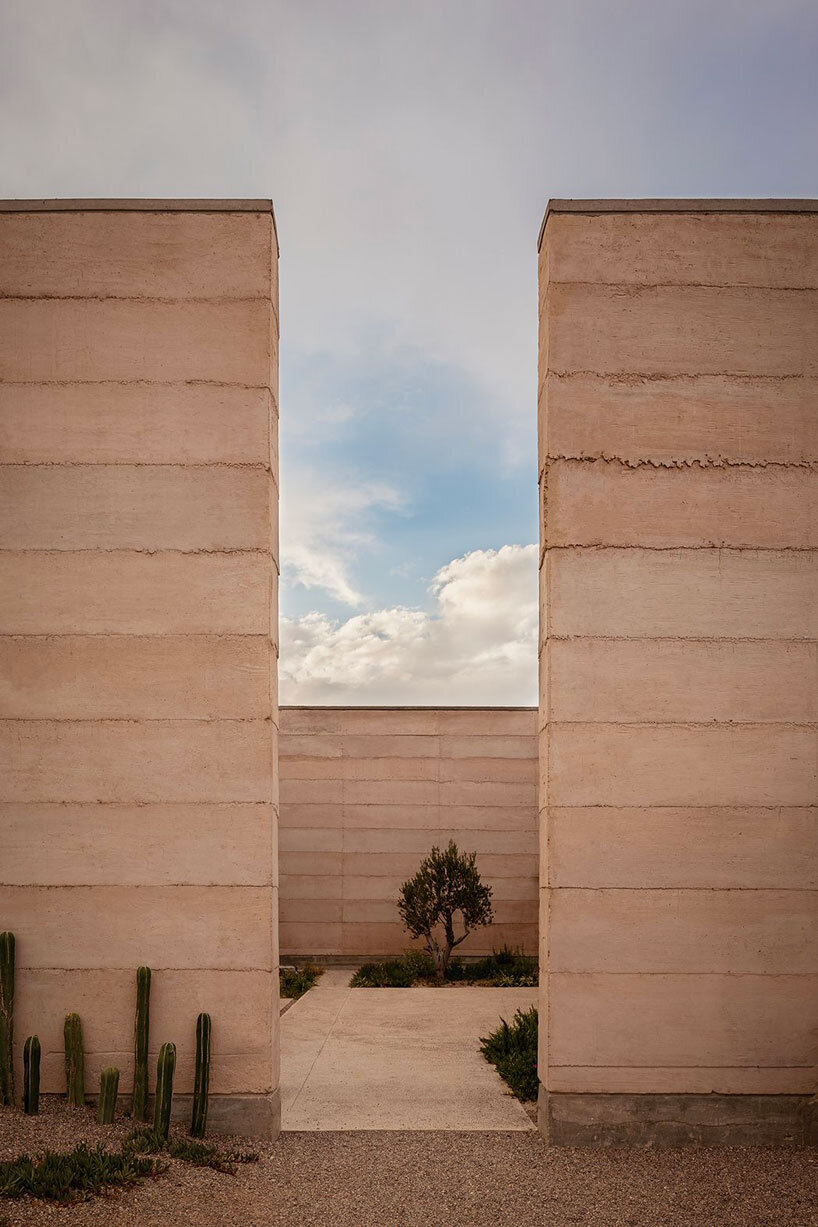
rammed earth walls, reinforced with cement, form freestanding enclosures throughout the complex
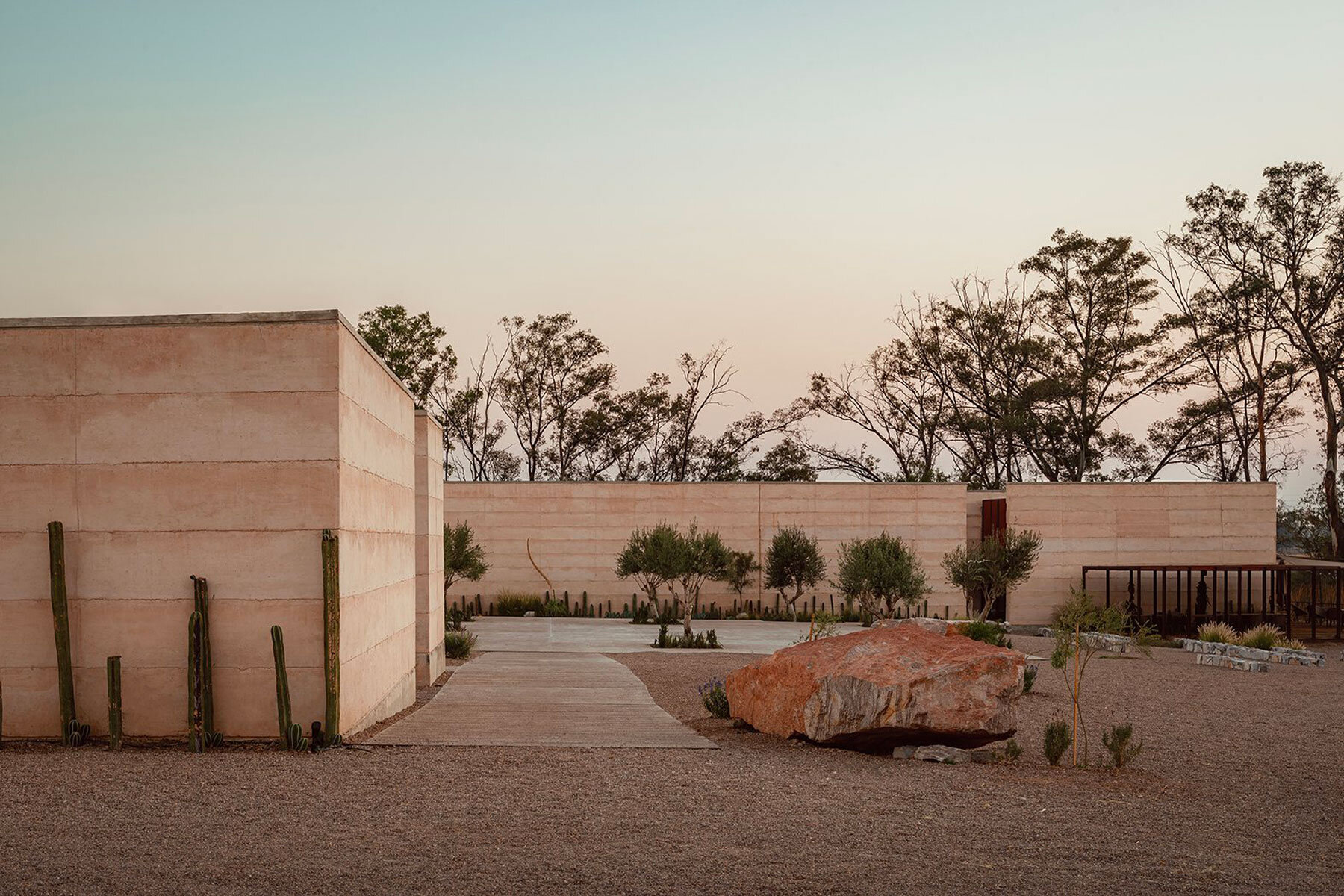
open spaces feature cacti, olive trees, and low stone walls that double as seating and terrace retainers
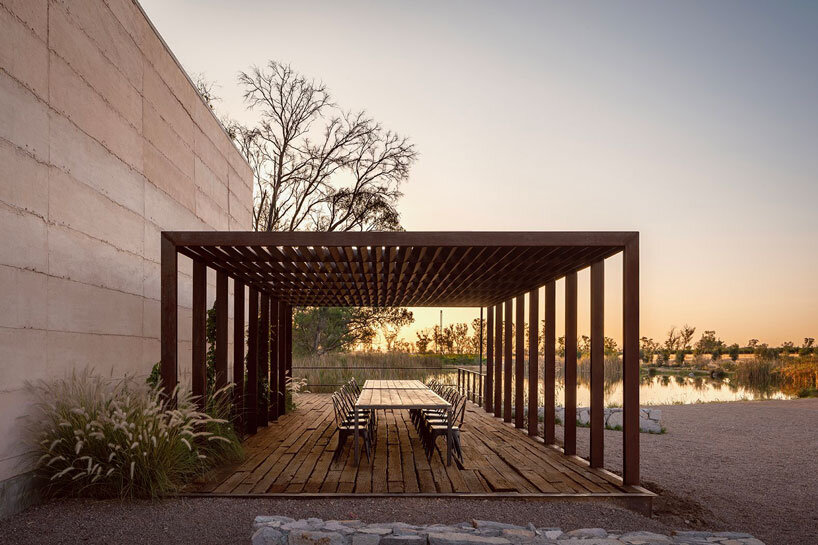
lightweight metal and sheet metal structures echo agricultural constructions
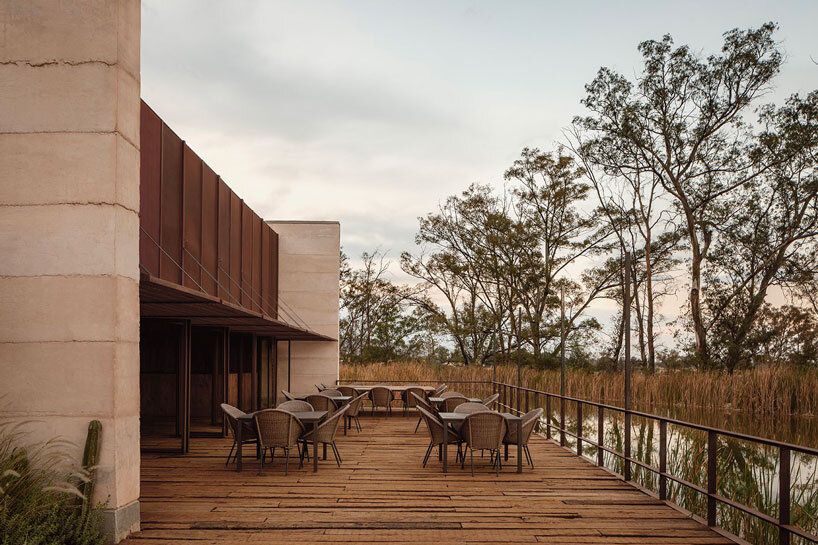
pivoting doors in the tasting room open onto a cantilevered wooden deck, extending over the lake
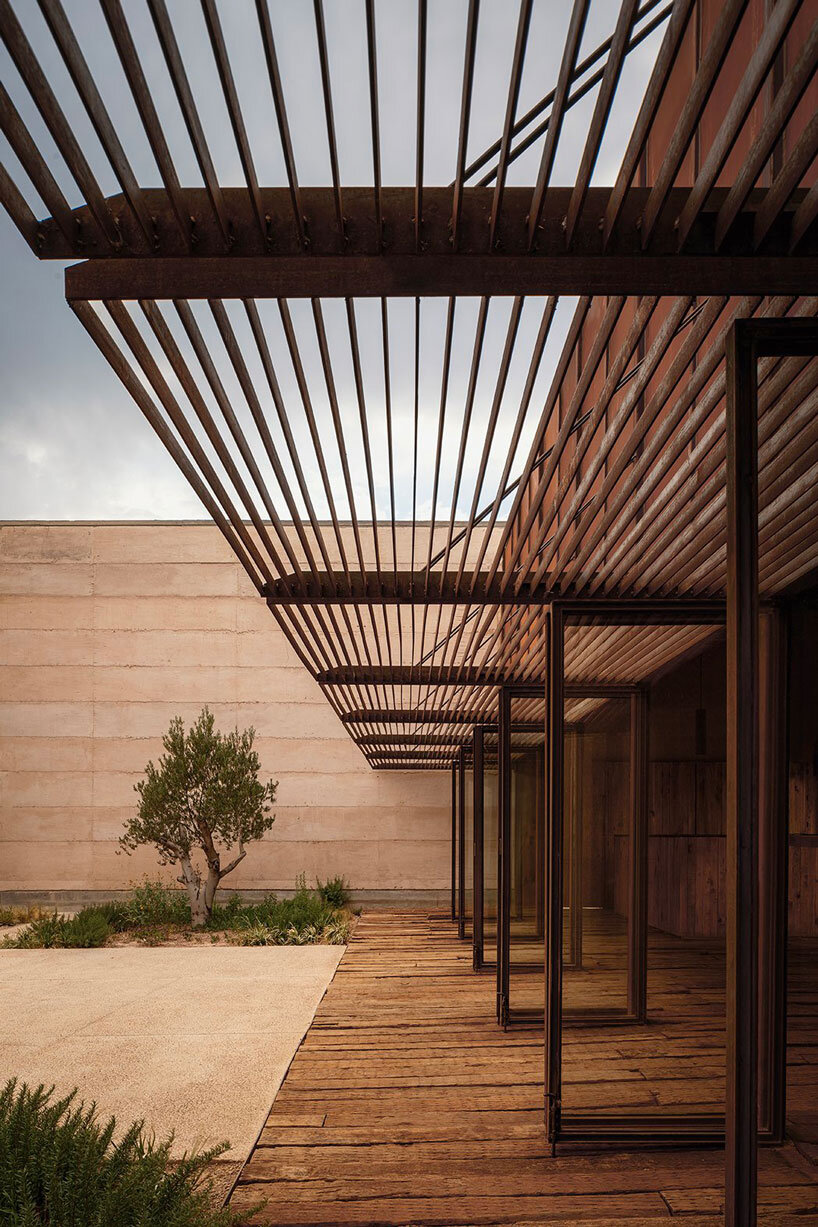
the arrival square, framed by walls and a row of cacti, directs visitors towards the main esplanade
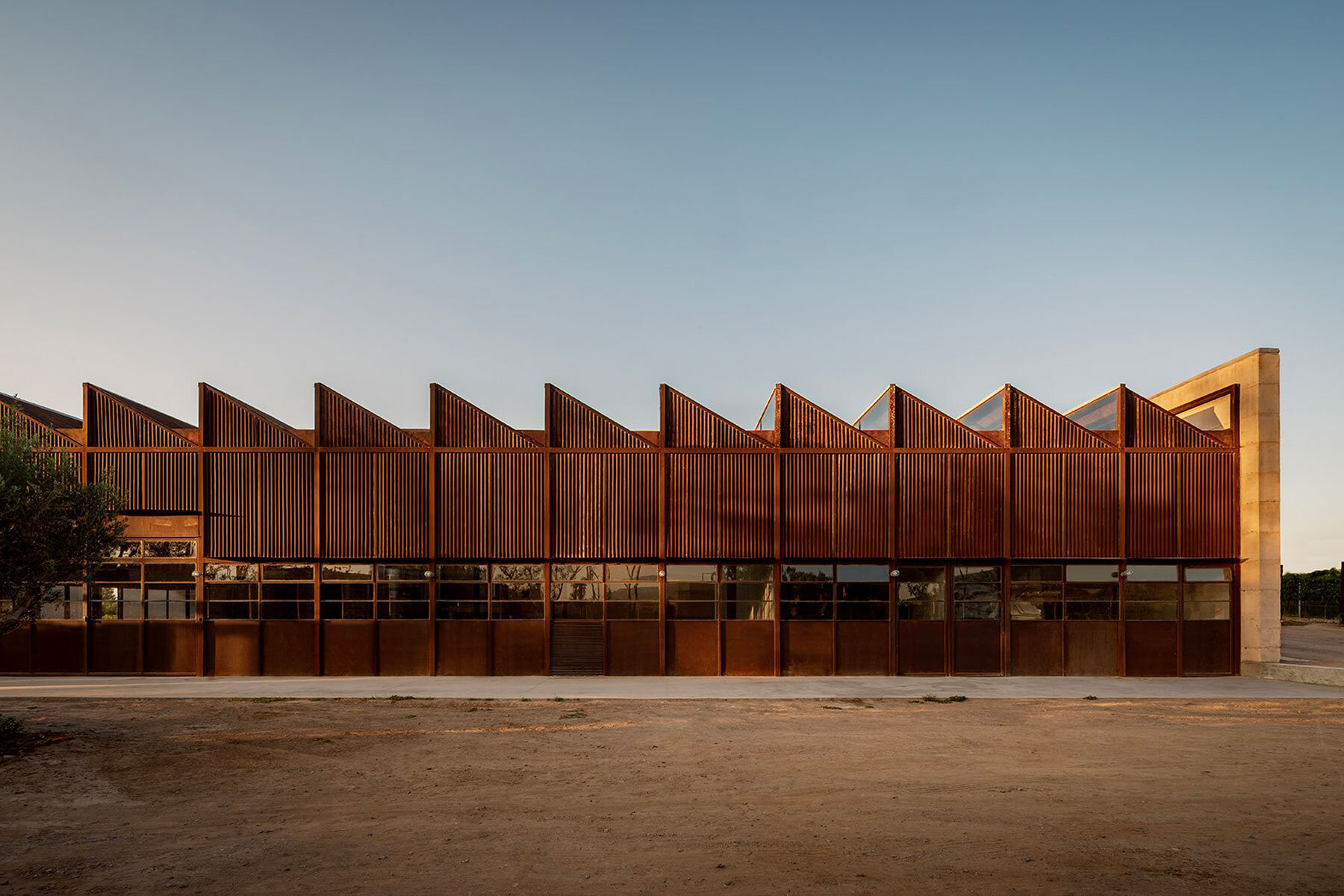
a central courtyard connects the production area and tasting room, balancing function and design
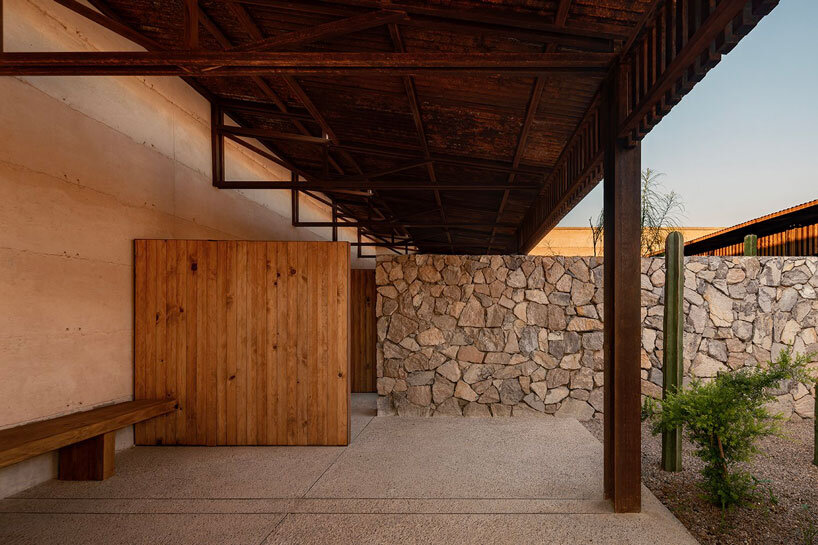
privacy is achieved through low, T-shaped stone walls, combining openness with seclusion
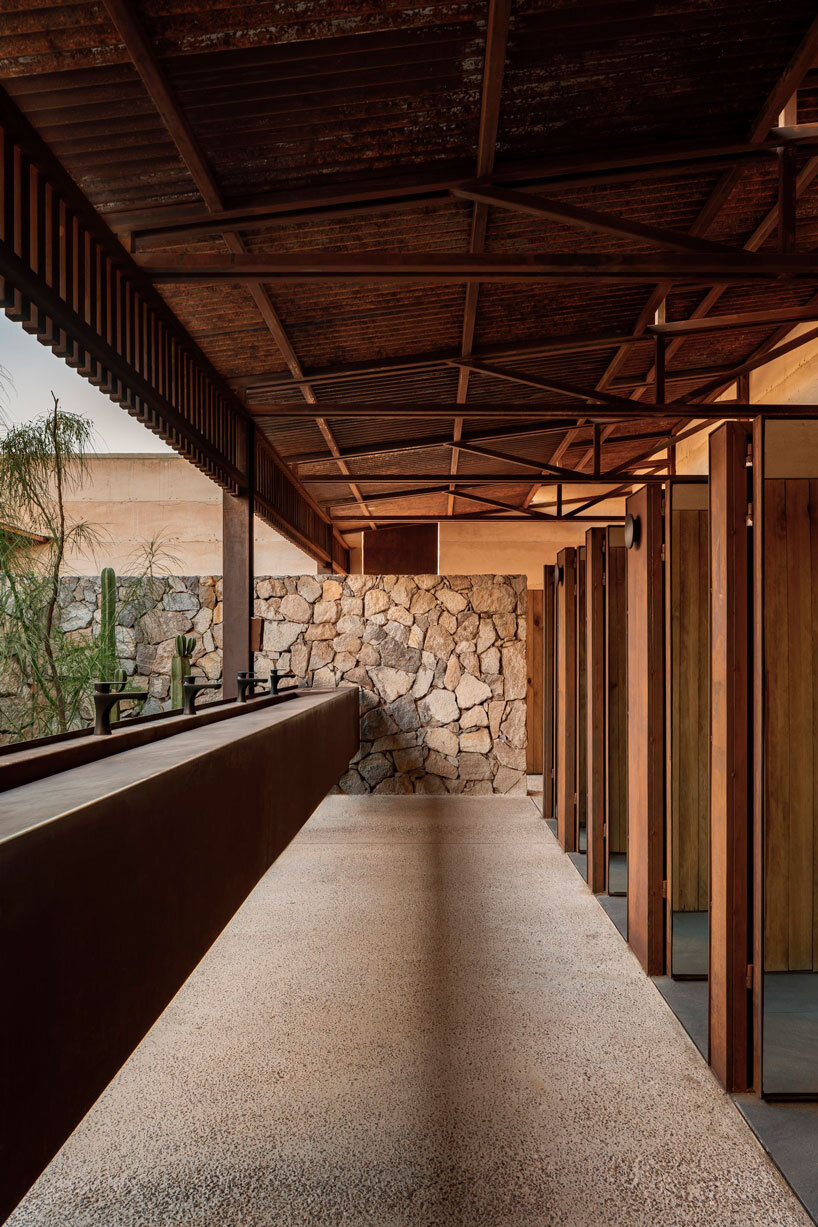
full-height openings lead to the restrooms, where cactus courtyards provide a tranquil transition space
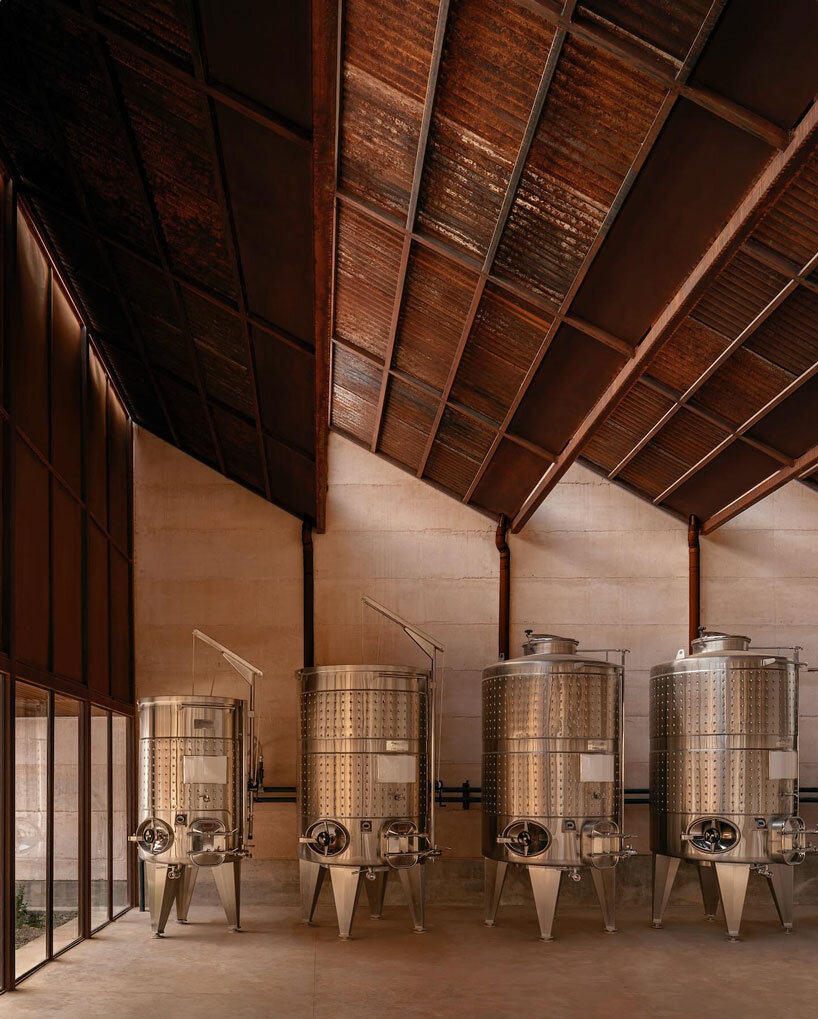
the cellar creates a dramatic atmosphere into the space, designed for wine maturation and tasting
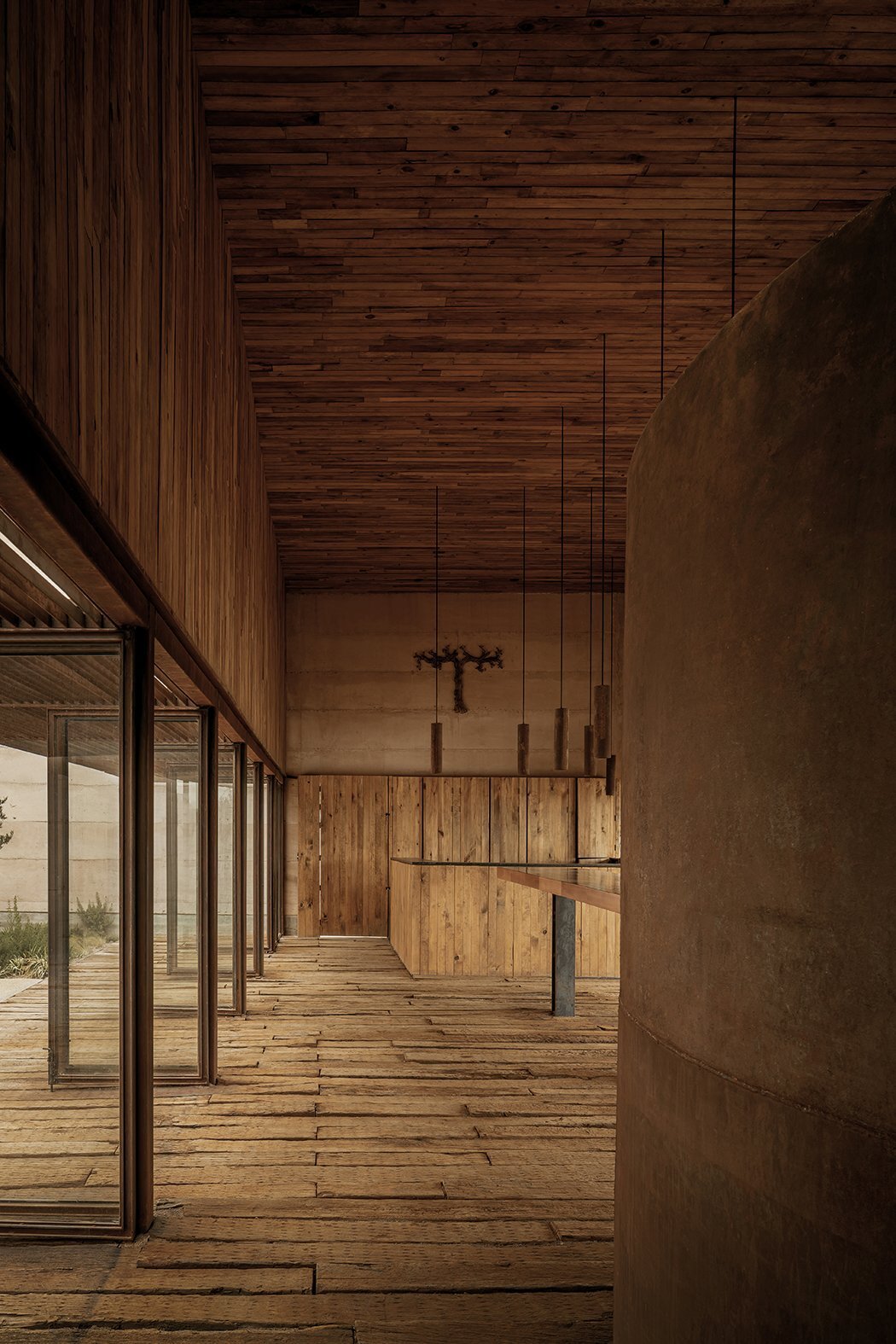
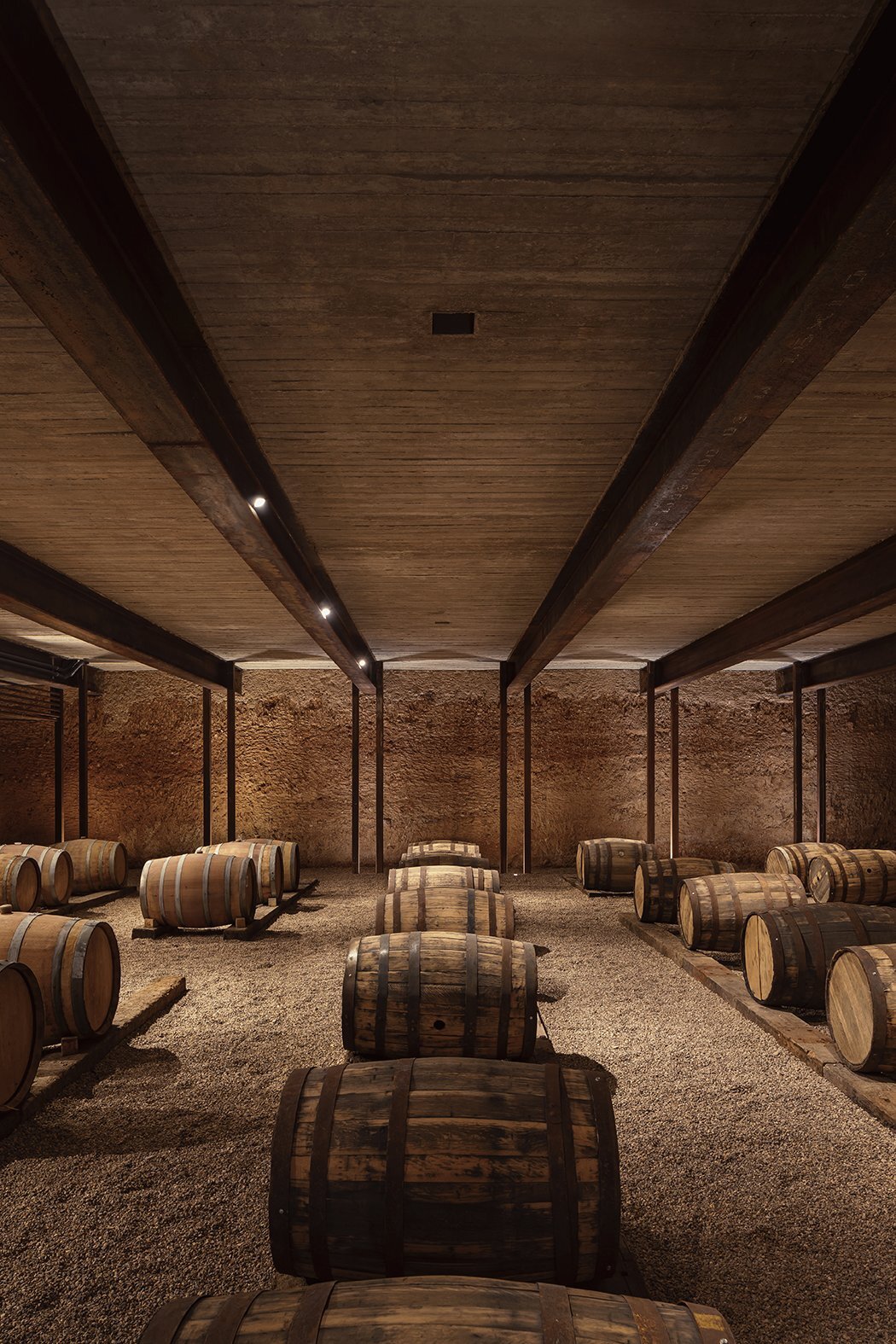
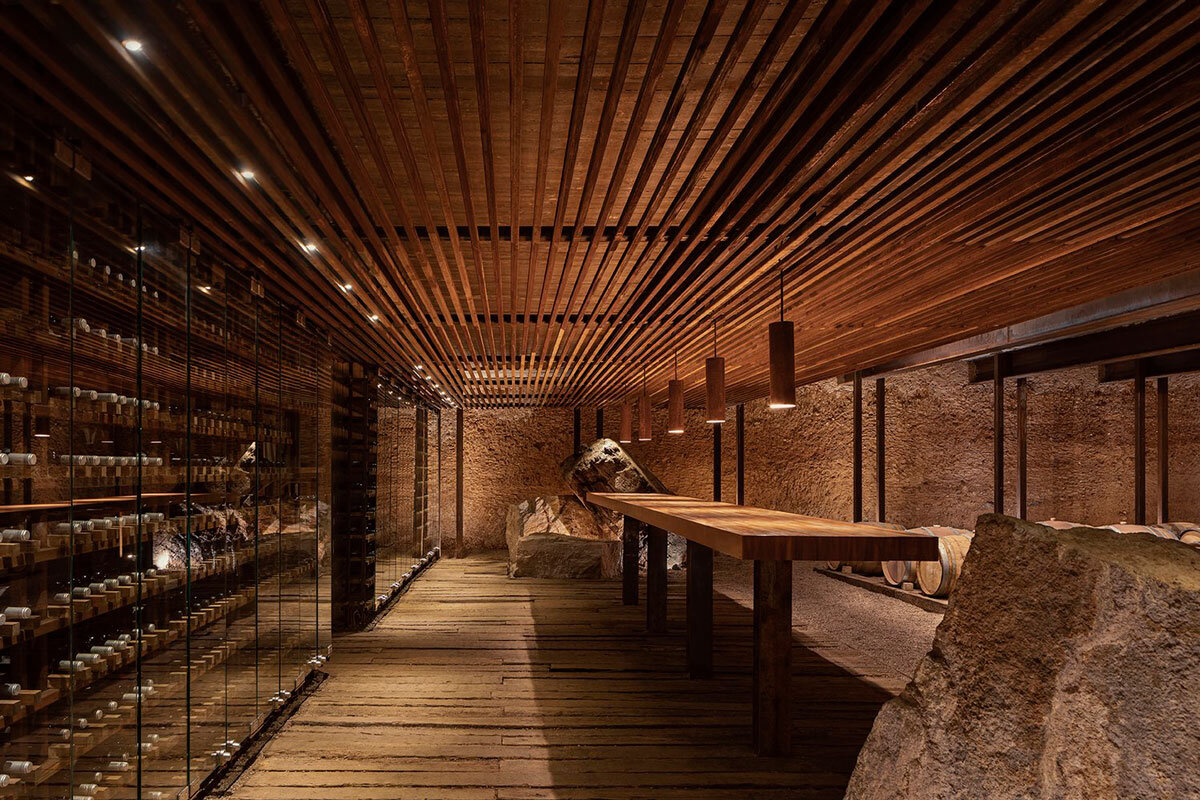
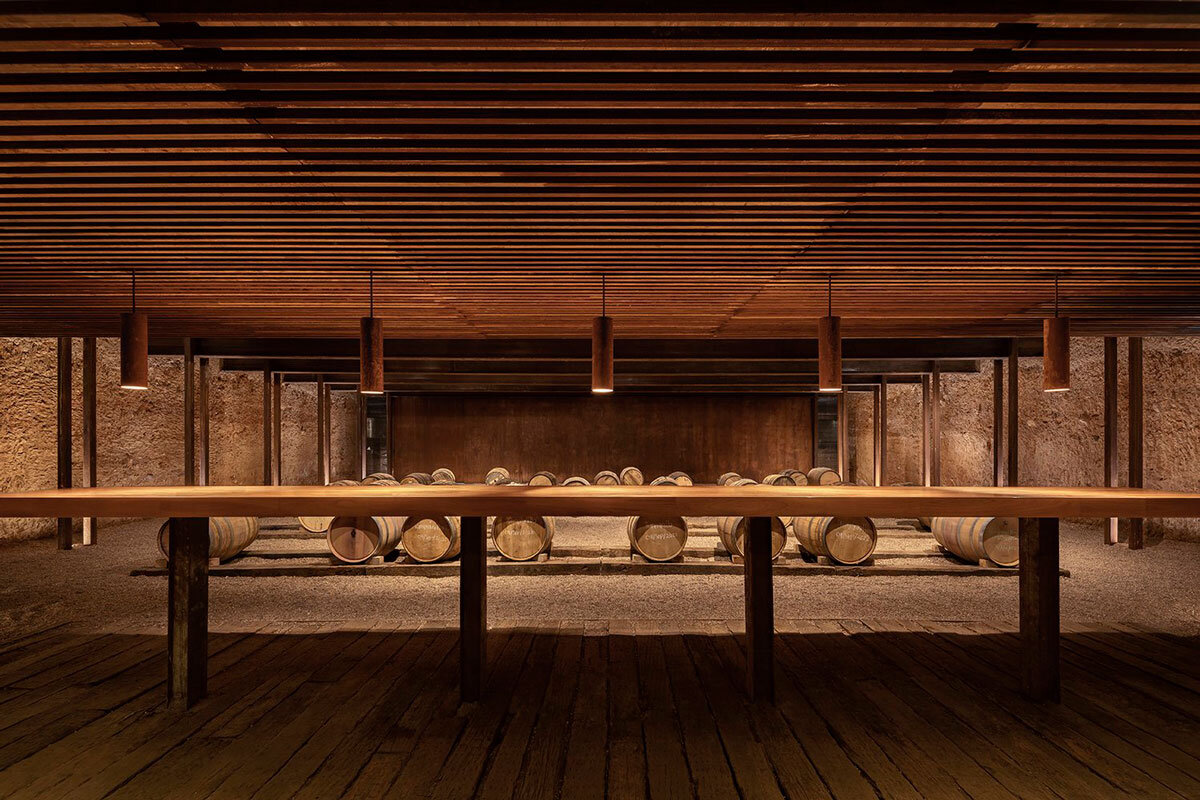
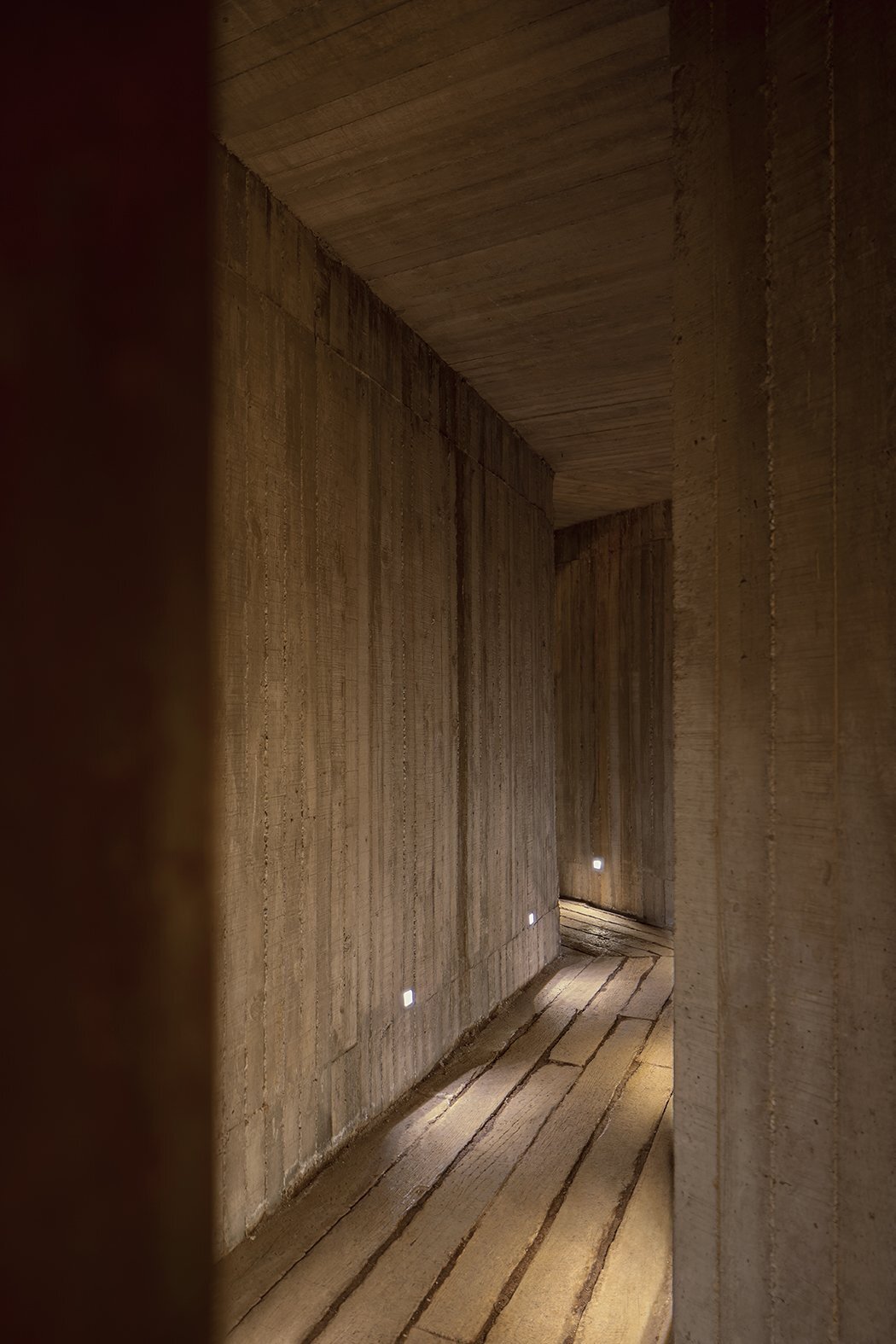
project info:
name: Tierra Tinta Winery
architect: COA arquitectura | @coaarquitectura
lead architect: Francisco Gutierrez
coordination: Catalina Joya
collaboration: Patricia Enríquez, Tania Robles, María Morales, Edgar Ramírez
structural engineer: CEROMOTION, Juan Jesús Aguirre
location: Aguascalientes, Mexico
photography: César Béjar Studio | @cesarbejarstudio
designboom has received this project from our DIY submissions feature, where we welcome our readers to submit their own work for publication. see more project submissions from our readers here.
edited by: christina vergopoulou | designboom
